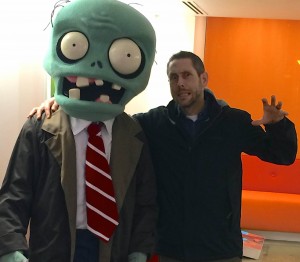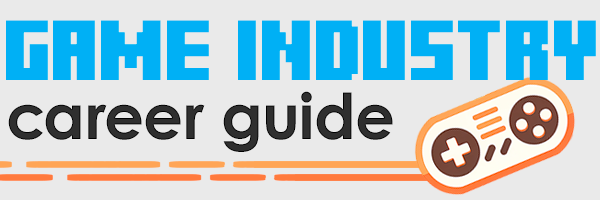How To Become A Video Game 2D Artist/Animator

Meet Rich Werner, 2D Artist/Animator behind “Plants vs Zombies”
Rich Werner has been using his art to make games come alive (or at least, undead) for over 15 years. He’s well-known as the artist behind Plants vs Zombies, an award-winning franchise that’s sold millions of units across a dozen gaming platforms.
Rich left his job at PopCap Games in 2012, and set out on his own to spawn a new breed of indie games. Today we talk with him about his role as a self-employed video game artist, and what it takes to succeed as a 2D Artist – whether you want to work inside of a game studio, or out on your own.
What’s a typical workday as an indie 2D Artist?
Since I work for myself these days, I usually get up and drink coffee, take the kids to school then come home and start drawing or animating. I have my daily conference call and then I get back into “work mode” by 10:30 a.m. When the kids get home, I take a break until they go to bed and then get back to work again until around midnight or 2 a.m.
How did you decide to leave your video game studio job and go indie?
Well, once the team I had worked with for 7 years was laid off, I decided I would try my luck working for myself. Eventually I ended up working with some good friends of mine on a new game currently in progress.
What’s your favorite part of the job? What’s your least favorite?
I love the freedom the most. I also like the fact that I can create without having a huge committee of non-artists telling me what they think is best, rather than trusting the artistic vision. Not that it isn’t important to have critique – but sometimes it can get out of control.
My least favorite part is probably also the freedom. It can be hard to stay on task without a boss, and it took some time to get used to that. Also, not going to an office can feel a bit lonely at times. Thank goodness for Facebook. [laughs]
What aspect of your job would be surprising to people looking in from the outside?
I do anything and everything that’s art-related. I think people would be surprised to learn that it’s all coming from one person – everything visual in our game is on my shoulders. I think people would be surprised at how long it actually takes to create a good, well-rounded game.
What does it take to succeed as a 2D Artist/Animator in video games?
You have to LOVE art for sure. You have to have that passion to create. If you want to create art for games, or any art-related job – It has to be in your blood. Draw SOMETHING every day! Even if it is just some quick doodles on a napkin.
It has to be in your blood. Draw SOMETHING every day!
You also have to be pretty easy-going. Being able to take an idea – no matter how long and hard you’ve worked on it – and then be willing to toss it out and start over if necessary. That can happen a bunch. You have to be able to let it go and keep moving forward.
What advice would you give to somebody who’s thinking about 2D game art as a career?
Honestly if you are thinking of being an artist in gaming, then draw all the time. Draw backgrounds, draw characters, draw everything.
And play games. Look out there and see what other artists are doing. Basically just focus on your skills as an artist and you can do it.
What would you recommend for education or books to start down that career path?
I’ve know people who have had tons of education, and some that got in with no college at all. It all boils down to that passion to create. If you want it badly then you need to constantly hone those skills and you will stand out in the sea of other job applicants.
As far as computer skills go, I would recommend you develop solid skills with Photoshop and with some sort of animation tool. I use Flash but there are always more programs coming out, like Toon Boom for instance, which will probably take over.
Learn animation as well. There is a great animation book out there called The Animator’s Survival Kit by Richard Williams. It covers all the basics and is a must-have quick reference. If you have the skills to animate and tackle other aspects of game creation in the artistic aspect, you’ll increase your chances of finding work.
Go out and buy tons of The Art Of books. All the Pixar books are great. Looking at great art will inspire you to create.
There are also a bunch of great workshops online you can check out. I took one a while back on Character Design with Stephen Silver. It wasn’t very expensive but it helped me get a better perspective on character creation.
You can reach Rich via his online portfolio or tweet him @rich_werner. If you liked this article, give back by sharing on Facebook, LinkedIn or Twitter.
Read my new book!
Making games for a living is an incredibly rewarding career, but it’s hard to break in unless you have insider knowledge. This book levels the playing field.


Good article! 🙂 Our 2D artist Alix Briskham has also shared her tips over on the Opposable Games site opposablegames.com/news/dev-diaries-alix-briskham-talks-2d-art-and-games-industry-tips/
Great tips from Alix over at Opposable Games. Thanks for stopping by, Dan.
Thank you for information, is there some additional info or advice about course of 2d artist?
Hi Chandler – here are a few more articles you might find helpful: How to Become a Game Character Animator, and The Ultimate Guide to Game Art Portfolios